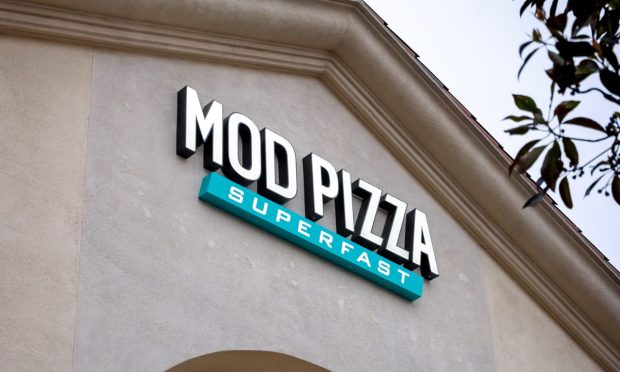To See Where the QSR Industry Is Headed, Look to Pizza

Pizza may be timeless, but the ways in which restaurateurs are getting that pizza from the kitchen to consumers’ mouths could not be timelier. With its easy deliverability, pizza has been at the forefront of the digital shift, and with its relatively simple production process, the food has been a popular one for emerging robotics companies aiming to automate quick service restaurant (QSR) makelines.
Taking note of pizza’s promising future, Seattle-based QSR chain MOD Pizza is looking to try its luck on the public market. On Monday (Nov. 22), the company, which has over 500 locations across 29 states, announced that it has filed a draft registration with the United States Securities and Exchange Commission (SEC) to go public via initial public offering (IPO).
In May of 2019, the company announced a $160 million fundraise from private investment firm Clayton, Dubilier & Rice, bringing its total funding to $339 million. In 2020, the company announced earlier this year, system-wide sales totaled $461 million, and digital revenue grew 275%.
While the majority of the restaurant industry was devastated by the events of the past 20 months, pizza-focused QSRs have benefitted from the shift to off-premises dining.
“Most certainly the pandemic brought a tailwind in the delivery business, not just for Domino’s Pizza but across the category and frankly across categories,” Domino’s CEO Ritch Allison told analysts in a call discussing the chain’s 2020 results. “And during the year, we saw strong growth in both your order counts and also growth in ticket in that delivery business’s customers tended to order more pizzas.”
While the sales spike of 2020 has normalized somewhat, pizza remains a popular choice on digital marketplaces. Domino’s has been describing itself since years before the start of the pandemic as a “tech company that sells pizzas,” and with the rise of delivery ordering, the company has accelerated its digital investments. In April, for instance, the brand launched autonomous delivery in partnership with robotics company Nuro.
See also: Domino’s Partners With Nuro To Launch Autonomous Delivery
Robotics are taking over the QSR pizza category not only in delivery but also in production. Multiple companies have been creating automated pizza-making machines, and in August, Seattle’s Picnic robotics company announced the commercial availability of its pizza system, seeing huge pre-order demand.
“We’re doing something that, for a human, is not complicated — it’s just hard,” Picnic CEO Clayton Wood told PYMNTS in an interview earlier this year. “It’s tedious. It requires attention to detail. When you have lightly trained workers, it’s hard for them to be consistent … So we think pizza is a great food to automate for that reason.”
Read more: Kitchen Automation Turns Digital Order Volume From Challenge To Opportunity
Additionally, pizza has also been at the forefront of the trend of restaurant technology companies increasingly tailoring their offerings to their customers’ unique needs. Take, for instance, Slice, a company that offers a digital ordering marketplace, software, marketing tools and a point of sale (POS) system for independent pizzerias.
“In general, our horizontal solutions are incredibly broad and shallow in the way that they solve problems … and I think merchants end up finding workarounds for the different gaps that these systems have that are specific to their needs,” Slice CEO Ilir Sela told PYMNTS in an interview over the summer. “[We have] a very specialized user interface and vertically integrated products to make sure that the job of the pizzeria owner and other staff continues to be more streamlined and easier.”